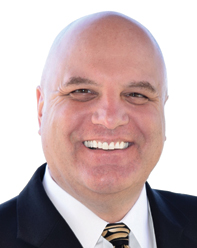Risk Adviser
Bad Company
Not all clients are valuable. Insurers must learn to recognize their customers’ toxic traits and weed out the ones that don’t offer a sustainable relationship.

By Lance Ewing
Clients who purchase and renew are the life force of carrier success, but they have to be the right clients, with the right carrier-client relationship mindset.
A young girl was attending a wedding for the first time. After a while she became restless. The bridegroom stood at the front of the altar as five bridesmaids, one by one, slowly walked up the aisle. Watching this procession, the little girl leaned into her dad and said, “Why doesn't he hurry it up and just pick one of them?” Or, so the story goes.
Insurance carriers also have to determine which customers they are going to choose, not only through underwriting or the claims process but through the relationship lens of the client's corporate risk manager or the insurance-procurer relationship. The carrier-client relationship is just as important as the broker-client relationship. Almost every property/casualty insurance company has a client service, account relationship or customer team, whose primary role is to keep those clients that the carrier wants from straying to the competition and to generate new business and opportunities. Insurance companies look to their in-house client relationship leaders to secure and retain customers who align with, are loyal to, and want to do business with that carrier. Happy clients are the goal.
But insurers also have to assure that these relationships are profitable. Here are three types of customers that carriers look at as less profitable and potentially relationship-toxic:
• You-give-and-I-take clients. These are clients who always want something but don't want to compensate for it. They don't value what the carrier has to offer and want the carrier to validate their premiums or claims settlements despite asking for free endorsements or broad language. There is a cost associated with the risks carriers assume and clients have to be cognizant of that. It cannot be a one-way street all the time. Insurers want to build a long-term relationship with customers who understand the value of the coverage offered and will appreciate it. If insurers are not generating revenue, even above marginal revenue from customers, then it is not a sustainable relationship.
• Then and now clients. The past is where many of these customers reside. And while loyalty should have its rewards, the times have changed and the client needs to have moved along with the changes. Over the past several years, insurers have had to slim down resources, training and personnel to focus on core lines of business competencies. Clients who years ago were the right fit may not be within the carrier's targeted service or product focus today. Profitable insurers can no longer offer products and services that aren't a fit with their business strategy and core lines of coverage just to keep some clients happy.
• High maintenance. These are customers who have needs beyond reasonable expectations. They can be a drain on the insurance company personnel's time for a myriad of reasons: not prepared for underwriting meetings; everything is last minute and an emergency; do not call back with claims information, etc. They repetitively assume more of the carrier's time with minimal return on relationship.
Clients who purchase and renew are the life force of carrier success, but they have to be the right clients, with the right carrier-client relationship mindset. Choose wisely.
Best’s Review columnist Lance Ewing is executive vice president of Global Risk Management for Cotton Holdings Inc. He also is the former president of the Risk and Insurance Management Society. He can be reached at bestreviewcomment@ambest.com.



























